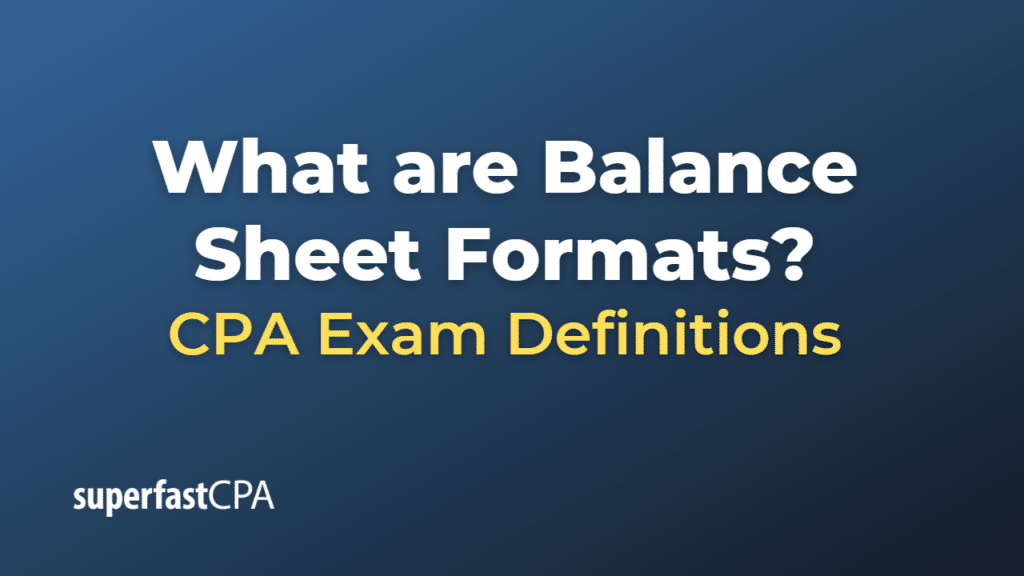Balance Sheet Formats
There are two common formats for presenting balance sheets: the account format and the report format. Both formats display the same information but organize it differently.
- Account format: In the account format, the balance sheet is structured like a T-account, with assets listed on the left side and liabilities and shareholders’ equity listed on the right side. Assets are further classified into current and non-current assets, while liabilities are classified into current and non-current liabilities. The account format visually highlights the fundamental accounting equation: Assets = Liabilities + Shareholders’ Equity.
- Report format: In the report format, the balance sheet is presented vertically, with assets listed at the top, followed by liabilities, and then shareholders’ equity. Like the account format, assets and liabilities are separated into current and non-current categories. The report format is a more linear presentation and is often considered easier to read.
Both formats provide the same financial information about a company’s financial position at a specific point in time. The choice of format depends on the company’s preferences and the requirements of its stakeholders.
Example of Balance Sheet Formats
Below is an example of a simplified balance sheet for a small business:
| ABC Company | ||
|---|---|---|
| Balance Sheet |
| As of December 31, 20XX | ||
|---|---|---|
| Assets | Liabilities and Owner’s Equity | |
| Current Assets | Current Liabilities | |
| Cash | $25,000 | Accounts payable |
| Accounts receivable | 15,000 | Short-term debt |
| Inventory | 20,000 | |
| Total Current Assets | 60,000 | Total Current Liabilities |
| Non-Current Assets | Non-Current Liabilities | |
| Property and equipment | 75,000 | Long-term debt |
| Total Non-Current Assets | 75,000 | Total Non-Current Liabilities |
| Total Assets | 135,000 | Total Liabilities |
| Owner’s Equity | ||
| Owner’s capital | ||
| Total Liabilities and Owner’s Equity | 135,000 |
In this example, ABC Company’s total assets amount to $135,000, and its total liabilities equal $45,000. The owner’s equity is $90,000. The balance sheet demonstrates that the company’s assets are equal to the sum of its liabilities and owner’s equity, as required by the accounting equation.













